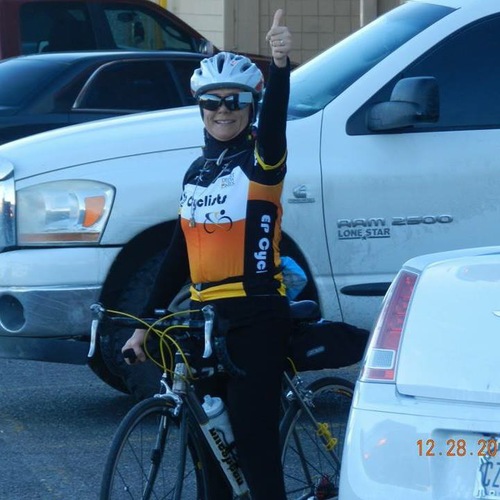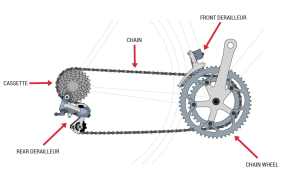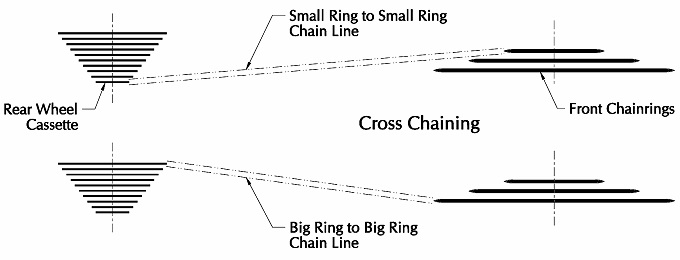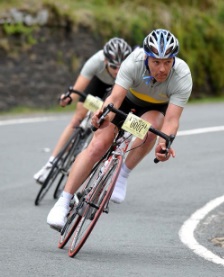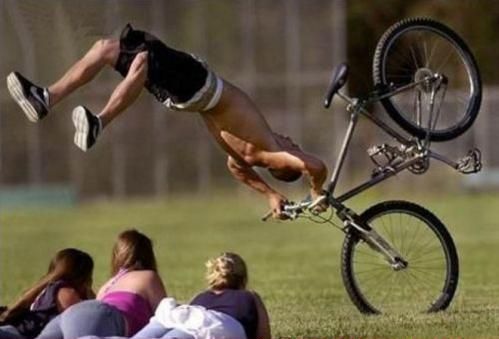Original content created by Margaret O’Kelley. Edited by David Middaugh, PT, DPT
This content was originally presented by Margaret O’Kelley at Crazy Cat Cyclery on 2800 N. Stanton St, El Paso, TX 79902 for a cycling clinic leading up to the 2015 Mighty Mujer Triathalon.
Margaret O’Kelley – Patient Highlight
Margaret is currently a Board Member and Ride/Event Coordinator for Velo Paso. She served on the Advisory Board of the El Paso Bicycle Club from 2008-2010 & 2014, during which she led rides, taught lessons 6-7 times a month and founded a beginner-intermediate group ride for advancing newer riders.
She is the 2009, 2010 and 2012 champion of the women’s Mt Lock Hill Climb. Margaret is a member of Randonneurs USA, a national group for unsupported long distance riding. In 2010 and 2011 she achieved Super Randonneur Status by completing a ride series of 200km, 300km, 400km and 600km. She is the only female Super Randonneur in El Paso. In the 2014 National Bike Challenge, she placed 1st overall in El Paso, 1st overall woman in Texas (9th overall), and ranked 682 out of 43,000+ nationally. That’s the top 2% in the nation!!!
Margaret is married to Sean O’Kelley and they have 2 daughters named Patti and Maddison. She is a big advocate for rescue animals. She’s rescued 4 dogs named Missy, Pugsly, Otis and Bella as well as a cat named Maxx.
This information is great for people looking to start riding their bikes for leisure or exercise. It is also good review for more experienced riders to be sure that you are familiar with some of the subtleties of braking, cornering and shifting.
Shifting
The purpose of shifting gears is to allow you to maintain a constant pedaling pace while you ride uphill or downhill, into the wind or with the wind at your back.
The Left Shifter
This controls the FRONT gear settings that are connected to the pedals (also called the crank and chain rings). Changing these gears makes a big difference in your pedalling.
The Right Shifter
Always think Right, Rear, Right, Rear, RIGHT, REAR. — Margaret O’Kelley
This controls the REAR gears that are connected to the back wheel. This set of gears is called a cassette. Shifting these makes smaller changes in your pedaling allowing for fine tuning in your shifting. These are most often used during riding.
How To Shift
Be sure to keep pedaling while you shift, but back off on how much pressure you put on the pedals. Avoid pushing the pedals down really hard because you could damage your bicycle’s drive train.
Avoid using extreme gear settings. For example, do not get into the largest gear on the front and the largest gear on the back. This is called “cross chaining”.
Shifting on Hills
Uphill – Shift down, which means the smaller rings in front and the larger rings in back.
Downhill – Shift up, which means the larger rings in front and the smaller
Cornering
Proper cornering allows you to remain safe while minimizing loss of speed throughout a turn. You must lean inward, or toward the direction of the turn. The faster you are going and the sharper the turn, the more you must lean. Keep your center of gravity in line with the bike so that you and the bike lean as a unit. Beginners tend to make the mistake of leaning the bike more while keeping the upper body upright.
Downhill Corners
Be sure to keep the inside pedal up and then straighten your outside leg. Put more pressure on the outside leg, but avoid locking out your knee. Keep your eyes looking ahead at the line you want the bike to follow. Slow down prior to entering the turn, in order to stay off the brakes during the turn.
If traffic allows, approach the turn by starting wide, then cut to the apex and exit wide. If riding in a group, keep pedaling to maintain speed and keep up with other riders.
Right Brake (rear wheel) – has less braking power than the front brake, so it takes twice as long to stop with the rear brake. Use this brake in the following situations:
- On slippery surfaces, wet pavement, or any time there is a risk of skidding
- On bumpy surfaces where your wheels may actually go off the surface. If you stop the front wheel and come down on a stopped wheel, there is a strong possibility that you may crash.
- When the front tire goes flat. If your front tire is flat or you have a front tire blowout, use the rear brake only to bring yourself to a safe stop.
- A broken cable or other failure of your front brake.
- On long, mountain descents where it is best to alternate between the front and rear brake, called feathering the brakes, so the rim doesn’t heat up and blowout the tire – particularly in hot weather.
Left brake (front wheel) – This has maximum braking power, but can send a rider over the handlebars if not used correctly.
Although many cyclists, shy away from using the front brake due to fear of flying over the handlebars, 95% of professional cyclists use the front brake only.
Using both brakes together can cause you to fishtail. This does not apply to long wheel base recumbents and tandems without a stoker.
If you’re in the El Paso, Texas area and would like to schedule an appointment with a physical therapist click below.

